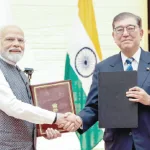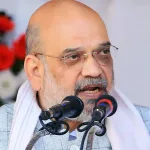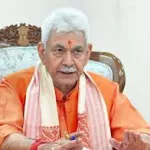Recent pictures of Prime Minister Narendra Modi gazing at the majestic Shankaracharya Temple went viral on social media. These pictures were taken when he was on a recent visit to Kashmir after the neutralization of Article 370 and 35 A. There are numerous architectural marvels and heritage monuments in Kashmir that define its place consciousness and aesthetics. These monuments give place its identity and also are the living proofs and witnesses of Kashmir’s journey from the times immemorial. Kashmir is the place on earth that is well documented. The Rising Kashmir has many times underlined the sense of historicity among the people and scholars of Kashmir in the editorials. It can be internalized from the serious primary research of the great historians of Kashmir who adopted innovative methodologies to document the rulers and their times to leave a valuable treasure for the posterity, so that there is no historical deficit and identity crisis among the Kashmiris. But as ill luck would have it. In spite of such a large corpus of primary sources, the Kashmiris have been trapped in identity crisis inflicted by the lack of knowledge and comprehension deficit and intellectual bankruptcy injected by the subversive regimes that wanted to the people hostage of falsehood. There are five Rajatarangini’s that give a comprehensive picture of the kings of Kashmir, their subjects, culture, religious practices ,social set up and monuments. The list is vast that will require an enormous space to catch just a glimpse of Kashmiris and their achievements. These five Rajatarangini’s are known by the names of their authors. Of these Kalhana’s Rajatarangini has acquire the global fame. The credit for it must go to a great researcher and scholar Mark Aurel Stein who did an extensive research to unfold the treasure of Kashmir to the entire world. A reader friendly translation of this historical text was also done by another Indian scholar Ranjit Sita Ram Pandit. Unfortunately, the Rajatarangini scholarship ended here. The other four Rajatarangini’s were relegated to the background. The reason being the lack of patronage and want of scholarship. Besides the vested interests wanted to subvert the original history of Kashmir, so that its place consciousness and aesthetics is violated and subverted. The only objective was to facilitate the identity crisis among Kashmiris. These remaining four Rajatarangini’s have been written by Jonraja, Srivara, Pragyabhatta and Suka receptively. Time has come to formalize serious research to bring these four Rajatarangini’s in the public domain and sensitize the people about their rich culture and heritage. That includes both tangible and intangible heritage. There have been few exceptions among scholars of repute that have contributed to the analysis and decoding of these four Rajatarangini’s. The name of Dr. Raghu Nath Singh comes to mind who has done pioneering work in this field. But that is not sufficient. His work can help to develop methodology to take the research on these four Rajatarangini’s to the next level. When Prime Minister Narendra Modi was setting his gaze on the majestic Shankaracharya overlooking the Dal Lake, he must have wondered about the architectural grandeur of the temple and its heritage value. Time has come that he initiates with his vision an exclusive heritage policy that patronizes the work for establishing the original place consciousness of Kashmir. So that its aesthetics that has been violated over the decades due to ethno-religious conflict can be restored to its pristine glory. Cultural mapping of Kashmir is a dire necessity. It will open new horizons for developing Kashmir in terms of its historical continuity making people proud of their heritage and priceless culture.
Kashmir’s Architectural Grandeur & Heritage
Sign Up For Daily Newsletter
Be keep up! Get the latest breaking news delivered straight to your inbox.
By signing up, you agree to our Terms of Use and acknowledge the data practices in our Privacy Policy. You may unsubscribe at any time.
Leave a Comment Leave a Comment
Stay Connected
Latest News
Recent Posts
- Japan to invest 10 trillion yen in India over next one decade
- 50,000 ‘skilled, semi-skilled’ Indian personnel to be sent to Japan: MEA
- HM Shah likely on two-day visit to Jammu from tomorrow
- LG admin forms committee to investigate Shri Mata Vaishno Devi landslide
- All 34 victims identified, bodies handed over to families





